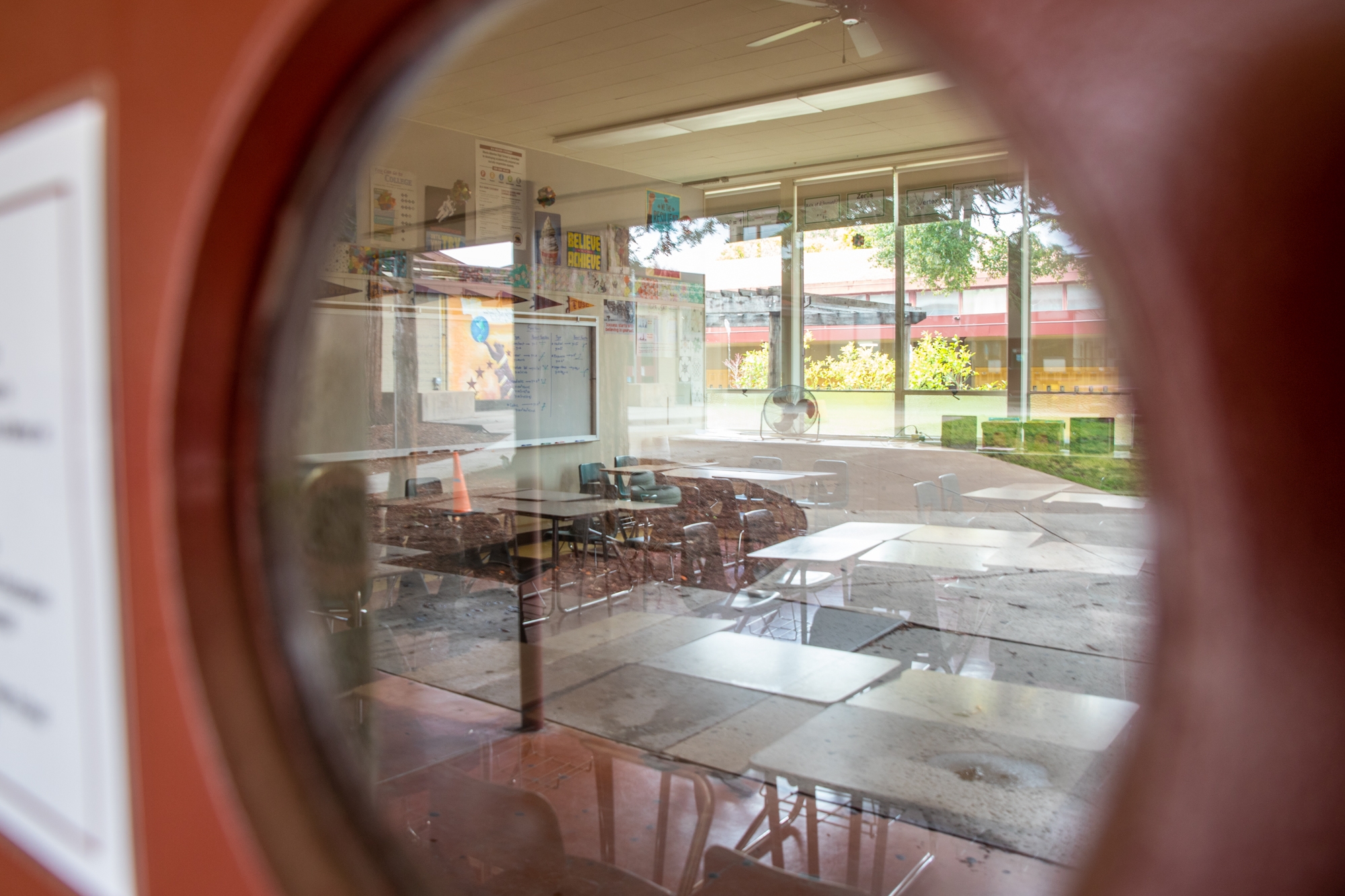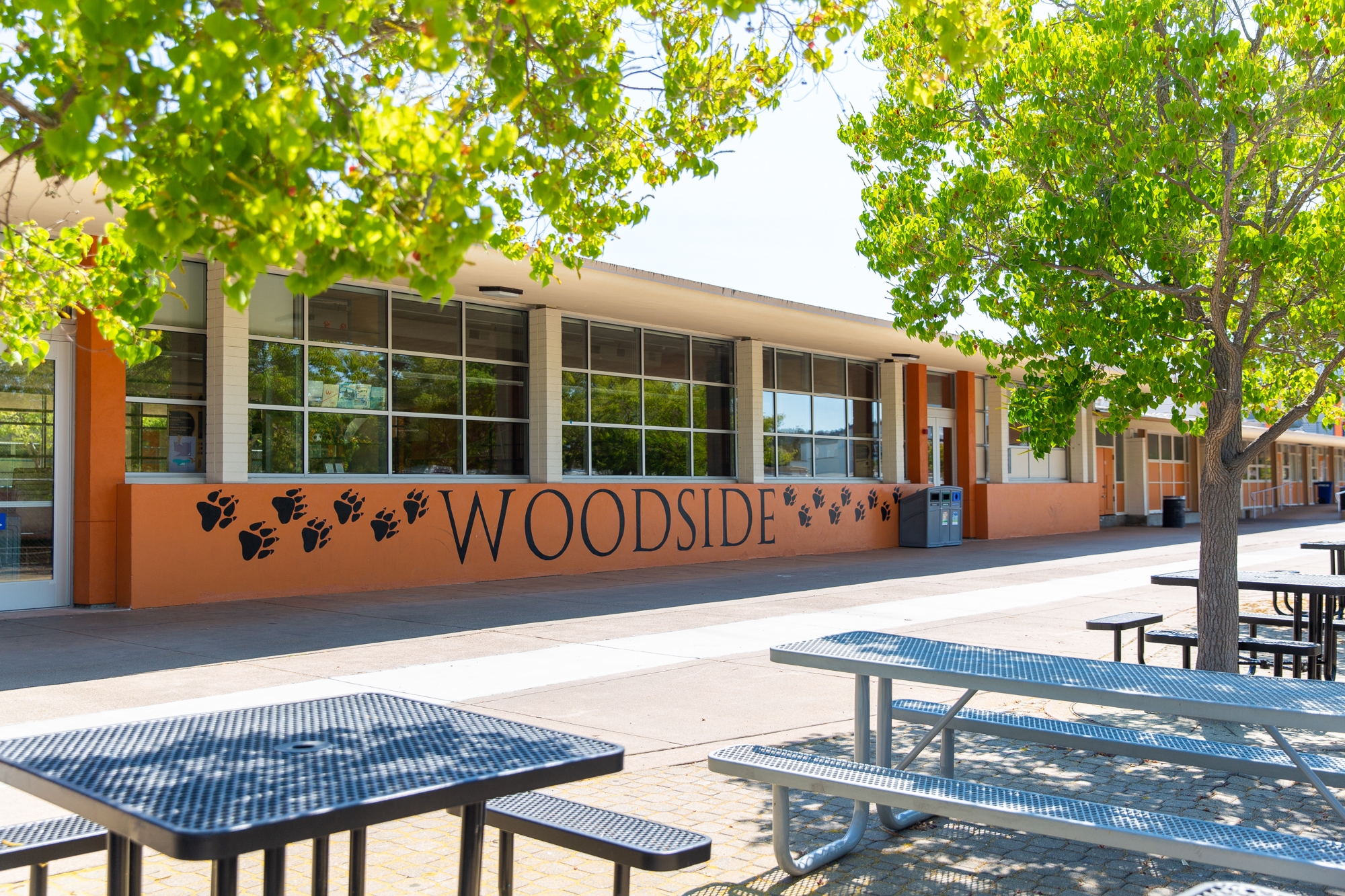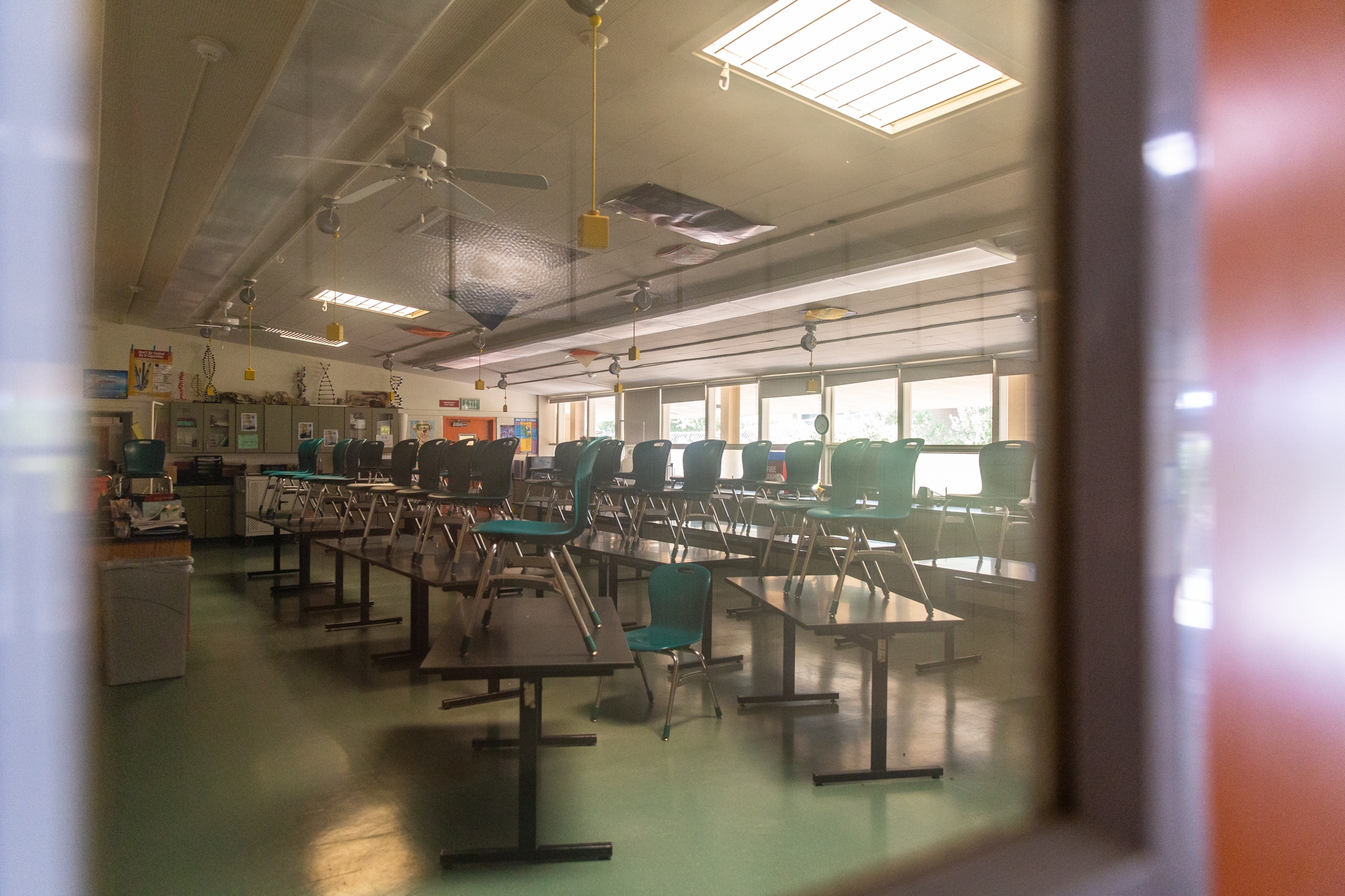Some Sequoia Union High School students are pleading to return to classrooms next semester, but necessary upgrades to ventilation systems and the complexity of organizing high school students — who typically have about six classes with six different teachers during their school day — into cohorts may cause delays.
District officials said during a board meeting Nov. 18 that they will present a reopening plan to San Mateo County's Office of Education next Wednesday, Dec. 2.
Locally, major public high school districts have not reopened and the Palo Alto Unified School District may push back its planned reopenings of Gunn and Palo Alto high schools. Private schools such as Menlo School have reopened to high schoolers.
Menlo-Atherton High School parents like Terri Epidendio said they don't understand why the district didn't have a plan for returning to campus sooner. She is concerned about students who don't have a good setup for distance learning at home are falling behind academically. She wonders how families in her Menlo Park neighborhood of Belle Haven, where she has seen homes crowded with as many as 17 people living there, are able to have stable WiFi access.
"These kids will lose a year and half of their lives," she said. "They can't make it up overnight. They are already behind to begin with. Maybe for once we should focus on the poor in this country. … These students are really at risk." Epidendio said there will be long-term health effects on students who are out of classrooms for an extended period of time; namely, not graduating from high school, which will impact their abilities to find jobs and obtain healthcare.
In addition to learning loss, COVID-19 closures will probably increase high-school drop-out rates, according to a recent research by McKinsey & Company. The virus is disrupting many of the supports that can help vulnerable students stay in school: academic engagement and achievement, strong relationships with caring adults and supportive home environments, the study states. In normal circumstances, students who miss more than 10 days of school are 36% more likely to drop out, according McKinsey.
In October, district officials reported that the percentage of students with more than one failing grade this fall jumped to 29% from 19.7% in 2019.
Interim Superintendent Crystal Leach noted that the district "does not have the luxury, nor would we (the district) ever want to, pick and choose who we (district) are educating (in person)."
Leach noted the district does not plan based on a set reopening date, but, rather, on conditions tied to the health and safety of students and staff.
"We are hopefully getting close to the end (of distance learning)," she said during last week's meeting. "I know people are tired and frustrated; this district will continue to move forward to best serve students and our families."
For those students who are not struggling with access to technology for distance learning, there are still concerns about the longterm health effects of students spending so much time on electronic devices during the school day, said Dr. Caroline Krauskopf, a district parent. She sees her own children with multiple windows open on their computer screens, texting and playing games simultaneously and worries about this learning set up will create longterm attention issues for students.
"Even for students not getting Ds and Fs, these behavior patterns hamper the depth of learning that these young people are acquiring," she said. "Physiologically it creates changes in the brain."
Teachers union perspective
Sequoia District Teachers Association officials have vehemently opposed reopening classrooms during the pandemic. During the Wednesday board meeting, union president Edith Salvatore read a prepared statement from the group, saying though teachers want to be back in classrooms to support students, the risk of virus transmission on campus is too high.
"A lot has changed since this past summer, but much hasn't. In terms of risk for COVID, we now know how to protect ourselves better, but the best protection is to limit interaction with people outside your household. Bringing large numbers of students and staff back means necessarily breaking that rule," she said. "It means that whatever precautions we have in place, they are only as good as our ability to follow and enforce them without fail, without a momentary slip. It means placing our well-being and that of our family members in the faith that our colleagues and students and their families are following all those same rules when they are with us and when they are not."
Teachers cry themselves to sleep and lash out with frustration that their students are suffering amid the pandemic and they cannot be there for them, she said.
"They feel like Sisyphus; pushing the boulder up the hill, just to have it roll down again," she said. "What would have been a quick glance across the room to see which students need help has become a view of black squares as teachers walk the knife's edge between compassionate understanding of teens' anxiety and tech issues and the expectation that they participate with their cameras on."
HVAC systems
A big focus for the district over the last several months has been upgrading classrooms' HVAC systems, Leach said during an October board meeting.
The district has been working on increasing the air exchange rates in classrooms — so that virus particles won't stick in the air for as long, she said. (Studies have shown air cleaning and filtration can help reduce airborne contaminants, including particles containing viruses.
HVAC fixes should be completed by late January, Leach said on Nov. 18.
County COVID-19 cases
Last week San Mateo County moved from the orange tier (moderate transmission of the virus) back to the red tier (substantial) because of increasing COVID-19 cases.
"As we continue moving forward, it is important to remember that our plans are contingent on current health conditions not deteriorating," Leach said in a Friday, Nov. 20, email to parents. "However, in all likelihood, as we see in neighboring counties, San Mateo County is projected to slip into the purple tier (widespread) eventually. If that does occur, we will not be able to implement our reopening plan."
As of an Oct. 16 accounting, district officials found they can accommodate slightly more than half of students on campus with distancing, Leach said. (That means at M-A, 124 rooms can accommodate 1,337 people total; 130 rooms with 1,439 people at Woodside High School; and 15 rooms with 218 people at TIDE Academy, according to district staff.)
"We know we will be back," Leach said. "High schools are quite complex. We are navigating through a pandemic no one has ever seen. When we see rises in cases, schools close. Locally, conditions will worsen."
Back in October, board President Allen Weiner said the district was working to reopen classrooms.
"This is hard, but the fact that this is hard does not mean this is impossible," Weiner said. "We're taking steps to have students return to campuses in increasing numbers."
The district sent students and families online questionnaires about reopening on Nov. 20. The survey closes on Dec. 4.
Watch the board meeting here.





Comments
Registered user
Woodside: Emerald Hills
on Nov 24, 2020 at 4:31 pm
Registered user
on Nov 24, 2020 at 4:31 pm
Public schools are run at the behest of teachers' unions. The interests of children are well down on the priority list.
My suggestion is that schools be open to the maximum extent allowed by local and state health codes. Any teachers who do not wish to teach may find alternate employment.
Registered user
Woodside: Skywood/Skylonda
on Nov 29, 2020 at 1:01 pm
Registered user
on Nov 29, 2020 at 1:01 pm
Parents like Joseph are obviously ignorant of the dedication it takes to educate our future leaders. In the middle of a world wide pandemic, Joseph uses a false narrative to make the baseless claim that teacher unions some how control school districts with their boards filled with elected citizens.
I understand the difficulty parents face with distance learning. How about parents try an understand the real concern teachers have regarding parents that don't take the precautions seriously. Instead of pounding your chest with comical threats to prove your manhood, why not have some empathy for those placed on the front line of this pandemic.
Registered user
Woodside: other
on Dec 3, 2020 at 5:25 pm
Registered user
on Dec 3, 2020 at 5:25 pm
I'm so sick of hearing how heartless and selfish teachers' unions are. You know who makes up the membership of a teachers' union? TEACHERS. The ones you entrust your children to every day to be cared for and taught to be good human beings. That kindergarten teacher who made your daughter smile every day? Union. The middle school teacher who tutored your son every day after school to make sure he understood algebra? Union. The high school teacher who alerted you to the fact that your daughter was showing signs of depression. Union. Teachers do not sit in a room twirling their imaginary evil mustaches saying "how can we screw kids over today and prove we are all powerful."
I also found it interesting that the article stated "For those students who are not struggling with access to technology for distance learning, there are still concerns about the longterm health effects of students spending so much time on electronic devices during the school day, said Dr. Caroline Krauskopf, a district parent. She sees her own children with multiple windows open on their computer screens, texting and playing games simultaneously and worries about this learning set up will create longterm attention issues for students." You know what? When you see your children playing games and texting while they're supposed to be in school? MAKE THEM STOP! Or don't complain when they end up staying up late to do the work they missed in class because their Discord chat was just too engaging.